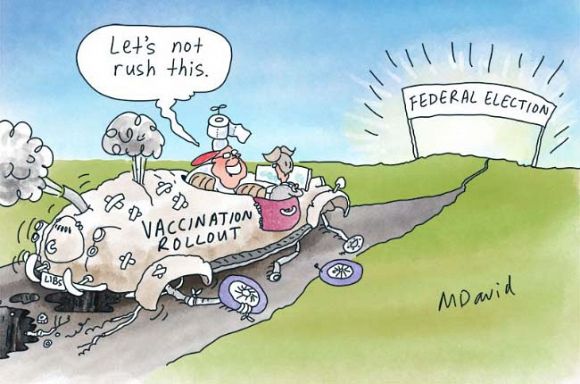It seems that we have forgotten the pandemic or the lessons of the pandemic.
The World Health Organisation (WHO) has declared the global health emergency over. WHO data shows that nearly a billion were infected globally and seven million died. Almost certainly the true figures are much higher. The global death rate peaked in January 2021 at 100,000 per week, last week it was a few thousand.
Australia’s COVID story was different from many countries. More than 80% of COVID deaths in Australia occurred in 2022 from January and July waves. 70% of Australians were infected, there were 18,000 deaths. Currently, on average, five Australians die each day from COVID. The pandemic has become silent and endemic.
Statistics do not tell the real COVID story, the story of not learning the lessons of past pandemics. The disease should have been called SARS2 just as the virus was called SARS-CoV-2.
Perhaps then we would have looked closely at SARS. We still have not learned the lessons of SARS. Consider four pandemic response reports issued last year, the Senate Select Committee on COVID-19 in April 2022, CSIRO’s 'Strengthening Australia's Pandemic Preparedness' in August 2022, the report of an independent COVID review 'Fault Lines' in October 2022 and the 'National COVID-19 Health Management Plan' in December 2022.
When I look at those reports, I see the same problem as with the national pandemic plan of August 2019. A pandemic imposes problems in sociology as much as in medicine. A pandemic plan is for people, not bureaucrats. A pandemic plan must be simple and relate to people.
Consider some of the issues. First, the role of aerosols and ventilation. When I first wrote about the pandemic in early 2020, I wrote of the SARS outbreak in two hospitals in Vietnam in 2003. 61 patients with SARS were hospitalised in two different hospitals. In the first hospital, extensive transmission of SARS occurred. Five patients died. In the second hospital, there was no transmission and no patients died. The first hospital was a modern air-conditioned hospital with closed windows. The second hospital had spacious rooms, high ceilings, ceiling fans and large windows kept open for cross-ventilation.
The WHO took too long to recognise the importance of aerosols. It took a letter from 239 scientists in July 2020 for them to change their mind. Why did we not understand earlier? We should never have quarantined travellers in closed, air-conditioned buildings, but in buildings where the windows open, and away from population centres. We only had to look at SARS.
Ventilation is critical in a pandemic yet none of the four reports issued last year discuss it. The Center for Disease Control and Prevention (CDC) in Washington has recently issued a report designed to improve ventilation in buildings. We did not use the time in the pandemic to look at design of buildings, hospitals, and quarantine facilities, or construct covered outside learning areas as we had done in the 2010 Building the Education Revolution.
We did not educate individuals that indoors was where the virus spread, that the riskiest place was their own household where 75% of the virus spread, and that outdoors was the safest place. We did not educate people to open the windows, and when they couldn’t open the windows, that the best protection was a mask. We needed to wear masks from early 2020 on public transport and in indoor spaces as was the case for SARA, but it took months for that to happen. Fresh air was key. We could have borrowed a slogan from another era that "it's the air, stupid". We failed to educate.
The second issue was in testing. In March 2020 I wrote an article that advocated mass testing across the population, not just those with symptoms but also those without symptoms. COVID was the invisible virus; the earliest evidence from Wuhan, Iceland and Italy showed that over 50% of the carriers were asymptomatic. The asymptomatic were often young and mobile, they were the spreaders we needed to find. We needed to test both the symptomatic and asymptomatic.
Instead, we chose to test only those with symptoms. None of the reports last year discuss finding the asymptomatic carriers. They did not talk to statisticians. They did not address one of the most important issues of the pandemic.
Why did we not mass test earlier? We put all our eggs in the basket of the Polymerase Chain Reaction (PCR) test to detect the virus. We regarded them as the gold standard and dismissed evidence of their false-negative rate of 67% within five days after exposure and 66% twenty-one days after exposure. PCR tests were costly. Pathology companies extracted monopoly profits. They increased the price of the test from $25 to $100. A gold standard for some.
The PCR tests led to long queues at testing stations, long delays in results and excessive disruptions to lives. Nearly 99 per cent of results turned out to be negative. We wasted resources on the uninfected. We could have developed a rapid antigen test (RATS) strategy in 2020. Billions of RATS were available in 2020 produced by Australian biotechnology companies but the companies were not invited to the table. The tests in 2022 had the same reliability as the tests developed in 2020.
RATS had many advantages. They were cheap, easy to use, and results could be processed quickly. Multiple testing was possible, as much as three or four times a week and multiple testing increased the probability of detection. We could have used RATs to pre-screen to be confirmed by a PCR test. RATS tests were ideal for mass testing across the population. Why were they not used earlier?
Managing a pandemic is like managing a portfolio. Politicians are not good portfolio managers. They put too many eggs in the basket of PCR tests and the basket of the Astra Zeneca vaccine. They put too much emphasis on day-to-day data and too little emphasis on practical issues like ventilation, mass-testing, oximeters, purpose-built hospitals, quarantine sites, and education. We need to understand why there was not a more diversified approach.
Perhaps the answer lies in the way the pandemic was governed by the national cabinet, premiers, chief medical officers, the Australian Health Protection Principal Committee, state medical committees and the Therapeutic Goods Administration. We may have been over-governed. We may have been better off with a smaller task force that included not only epidemiologists, but also those with more diversified expertise in biotechnology, statistics, logistics and communications.
None of the reports of 2022 asked the tough question: were we over-governed?
When I ask people to reflect on the pandemic, their first response always refers to lockdowns. Lockdowns represented the greatest restriction of movement. It was understandable to restrict movement into Australia, but not necessarily movement between states. Recent polling suggests an aversion to lockdowns. Lockdowns had problems that could have been foreseen.
Lockdown rules were always arbitrary based on criteria that were not properly defined. When rules are arbitrary, they will always be broken. Lockdowns were more unfair on some demographic groups; the problem of a one size fits all approach. The poor tended to be affected more than the rich, the young more than the old. A U.S. study of educational outcomes shows how much more. By late 2022, primary school students were half a year behind in maths and a third of a year behind in reading. Students have a lot of catching up to do both in learning and in life.
Lockdowns meant the deferral of decisions, including checks on other health problems. In 2022, Australia had a mortality rate 15% higher than normal, the highest since World War II. While many of the deaths were due to COVID, deaths from cancer were up by 5%, from dementia by 15%and diabetes by 19%. Deferral of economic decisions led to pent-up demand fuelled by a large fiscal and monetary stimulus. The result was inflation.
We can never know what would have happened if we had not locked down. Some suggest Sweden provides an answer. Sweden did not lock down. Sweden had one of the lowest excess mortality rates between 2020 and 2022, according to the UK National Office of Statistics. Sweden is not Australia. Surely though we must ask and answer the toughest question of all: were lockdowns necessary?
Dr Kim Sawyer is a senior fellow in the School of Historical and Philosophical Studies at the University of Melbourne.
Related Articles
 This work is licensed under a Creative Commons Attribution-NonCommercial-NoDerivs 3.0 Australia License
This work is licensed under a Creative Commons Attribution-NonCommercial-NoDerivs 3.0 Australia License
Support independent journalism Subscribe to IA.














